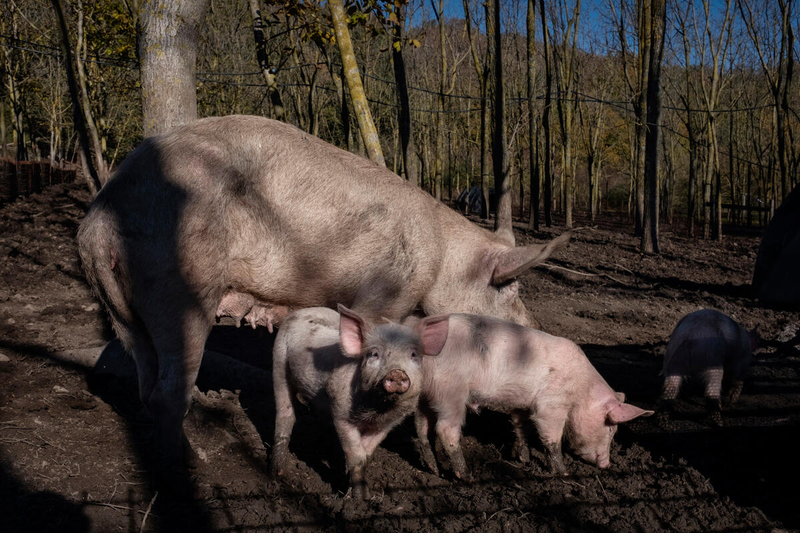Joining forces to overcome Eastern Europe's African Swine Fever threat

The urgency of a coordinated response to contain the threat of African Swine Fever was high on the agenda at the recent National Convention on Animal Health, Food Safety, and Quality in Serbia. At the event, lessons were shared from an EBRD/FAO project in Bulgaria, Romania and Serbia that has taken a regional cross-sectoral approach to containing the spread of the disease.
Getting a step ahead of African Swine Fever
African Swine Fever (ASF) is a highly contagious and deadly viral disease that affects swine breeds reared on farms and found in the wild. Yet its march across Eastern Europe towards the west is facing some checkpoints that will help stop it in its tracks. This is due to efforts to step-up action against the spread of the disease across the Eastern European region – the results of a European Bank of Reconstruction and Development (EBRD)/FAO cooperation programme on Animal Health and Food Safety that has been implemented in Bulgaria, Romania and Serbia during the last three years.
Lessons learned from this initiative have just been shared at the National Convention on Animal Health, Food Safety, and Quality held in Serbia. The event – which took place in January 2024 - was organized in collaboration with the Ministry of Agriculture, Forestry and Water Management and the Chamber of Commerce of Serbia. It was attended by more than seventy participants representing livestock producer associations, the pork industry, commercial farms, civil society, academia and public authorities.
“Transboundary diseases require coordinated transboundary approaches that involve both public and private sector stakeholders,” says Nemanja Grgić, Principal Manager, Agribusiness Advisory, EBRD. “With the right investments and capacity building across the sector, it is possible to significantly reduce incidences of the disease and increase outbreak preparedness. This is good news for large-scale commercial farms and smallholder producers alike across the region and beyond.”
Simulation, containment and vigilance from the farm to the wild By working directly with commercial operations on the ground, the project has helped understand better the entry points for the disease – an essential first step to plugging gaps where transmission can occur.
“A coordinated effort to contain African Swine Fever means engaging different stakeholder groups at the regional, national and local levels, and the private sector is an essential part of that,” says Dmytro Prykhodko, Senior Economist, FAO. “We visited three commercial farms to review current practices, provide technical support, and develop recommendations for other producers, whether small or large, to improve biosecurity and animal health. We also looked beyond the farm to local communities to better understand day-to-day risks such as threats of ASF transmission from wild boar populations. This led us to work with hunting ground managers to increase their awareness of the risks and build their capacity to mitigate them, for example by training them in effective methods of carcass disposal.”
Beyond the project
It was clear during conference discussions that, while the fight against ASF is far from over, those on the front line in the project countries have now a greater understanding of the threats at stake, and their eyes are open to the urgent need to respond in a coordinated and regional way.
“Stepping up biosecurity in the fight against ASF requires active collaboration, a coordinated approach, and an enabling policy environment,” concludes Grgić. “It also needs upfront public and private sector investments. These will pay dividends later across the project countries, the region, and neighbouring regions who are next on the list of places at risk”.
For more on the project, visit Agtivate.
